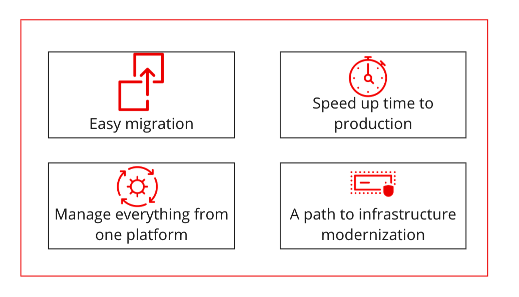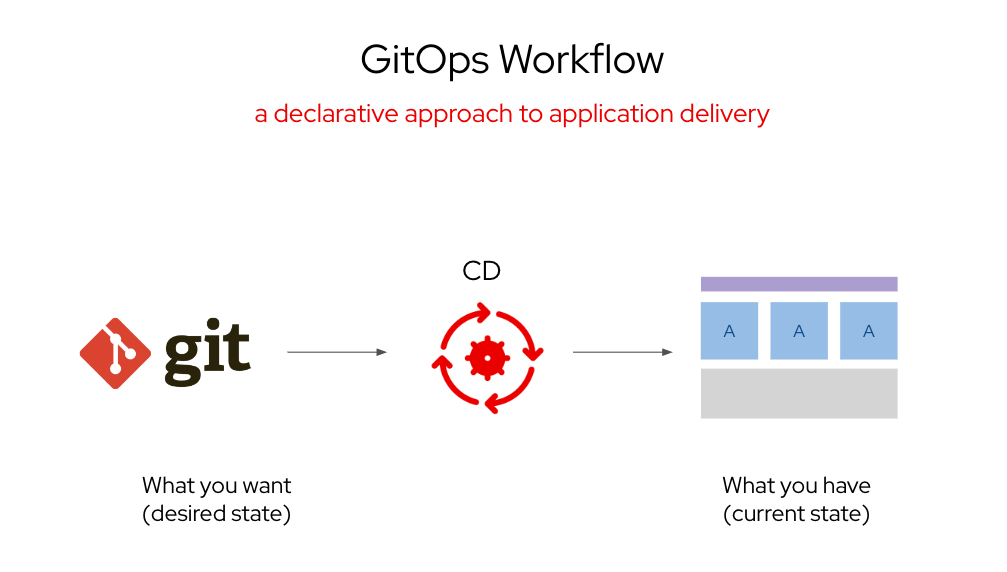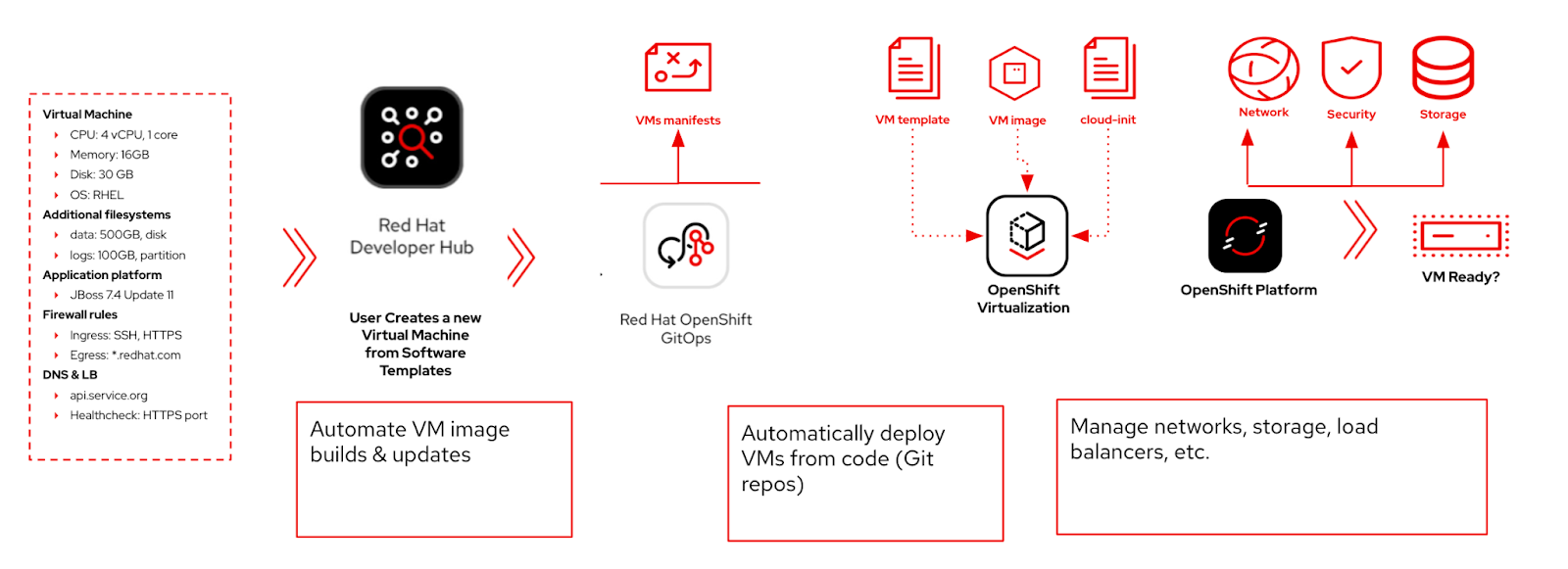Red Hat OpenShift Virtualization enables teams to run and deploy their new and existing virtual machine (VM) workloads into Red Hat OpenShift. OpenShift Virtualization offers a path for infrastructure and application modernization, taking advantage of the simplicity and speed of a cloud-native application platform and aims to preserve existing virtualization investments while embracing modern management principles.
What are the main benefits of Red Hat OpenShift Virtualization?
Red Hat OpenShift Virtualization offers developers, IT operations, and platform engineers a comprehensive solution that simplifies VM migration and deployment, speeds up time to production, and unifies management across VMs, containers, and serverless workloads (Figure 1). Integrating existing virtual machines with cloud-native architectures paves the way for application modernization and maximizes your virtualization investments. Read more on the benefits of Red Hat OpenShift Virtualization.

Introduction to Red Hat Developer Hub
Red Hat Developer Hub is a developer portal that enables teams to work efficiently and seamlessly with containers and cloud technologies while integrating best practices and scaling them across any organization. Developers and platform engineering teams are part of many successful stories to bring modernization and new application capabilities.
Red Hat Developer Hub and OpenShift Virtualization
Red Hat Developer Hub provides a single pane of glass that also allows legacy applications and third-party systems to be migrated by leveraging Red Hat OpenShift Virtualization. Teams can build virtual machines through the Red Hat Developer Hub, streamlining the development process and reducing complexity. This comprehensive approach not only enhances productivity but also supports the seamless integration of diverse application delivery technologies.
Using OpenShift Virtualization to build virtual machines with Red Hat Developer Hub:
- Removes complexity for DevOps and developers.
- Reduces the time to access a VM.
- Standardizes VMs creation with best practices.
Benefits of building virtual machines with Red Hat Developer Hub include:
- The ability to scale operations by providing self-service provisioning.
- Consistency across organizations based on best practices when building in VMs.
- The capability to ensure that the VMs created are the only ones available for provisioning.
- The capacity to automate VM creation using software templates for consistency and scale across different teams.
- The use of Developer Hub's single pane of glass for legacy systems to cloud-native architectures.
- The ability to maintain user access using the Red Hat Developer Hub.
- The use of GitOps to manage everything as code for scalability and resiliency.
- Easy access and leverage cloud-native technologies such as OpenShift Pipelines and Red Hat OpenShift Service Mesh for your virtual machines.
Red Hat Developer Hub uses the power of GitOps to create and maintain the VMs definition in the Kubernetes cluster.
OpenShift GitOps enables customers to build and integrate declarative git driven CD workflows directly into their application development platform.
Key features from Red Hat OpenShift GitOps
Red Hat OpenShift GitOps helps you automate the following tasks:
- Ensuring that clusters have similar states for configuration, monitoring, and storage.
- Applying or reverting configuration changes to multiple Red Hat OpenShift Container Platform clusters.
- Associating templated configuration with different environments.
- Promoting applications across clusters, from staging to production.
Figure 2 depicts the GitOps workflow.

OpenShift GitOps will ensure your desired state is the current state in the cluster making it easier to manage and scale your VMs configurations.
Provisioning a VM with Red Hat Developer Hub
The user could be anyone with the rights to create a new virtual machine, from operations to platform engineers or developers. The user will interact with Developer Hub to select the desired VM instance type and add the specific configurations. After this, Developer Hub will use the power of GitOps to build the new virtual machines in OpenShift with OpenShift Virtualization. Figure 3 illustrates Developer Hub's role in the VM creation process.

Red Hat Developer Hub’s two main components to build virtual machines
Developer Hub enhances its functionality through dynamic plug-in integrations, enabling seamless development experience:
- GitLab plug-in: Developer Hub is integrated with GitLab to read the software templates and create new repositories; this happens as part of the component creation defined in the software templates. Other SCM plug-ins are available for integration such as GitHub and Gitea.
- OpenShift GitOps plug-in: Developer Hub is integrated with OpenShift GitOps to manage the application state in the OpenShift cluster as defined in the source code repository.
Developer Hub also enables software templates:
- Software templates define the application build and deployment containing Kubernetes artifacts from pipelines, deployments, or any Kubernetes manifests.
- VMs manifest definitions are required to build the Virtual Machine using OpenShift Virtualization.
Conclusion
We can continue pursuing developer productivity by giving the tools necessary for them to succeed in building applications no matter the application’s architecture, from legacy systems to cloud-native technologies. Red Hat Developer Hub and OpenShift Virtualization can bring both solutions to developers to empower them with self-service on their software development lifecycle.
Next
Continue reading Part 2 of this series: A self-service approach to building virtual machines at scale.
Explore more topics:
Last updated: September 13, 2024